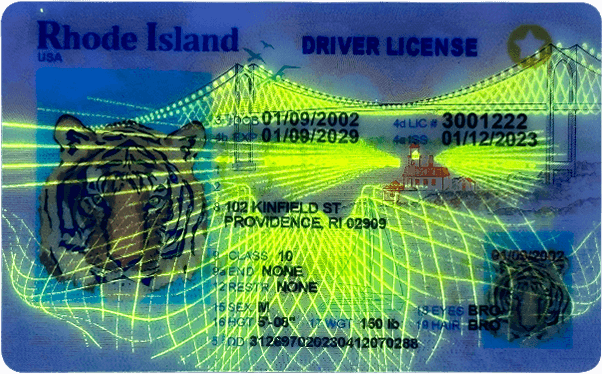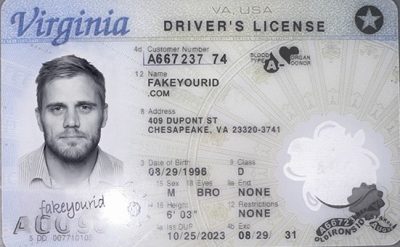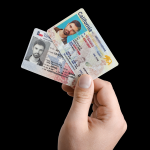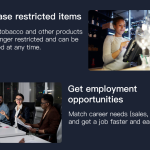For retailers, dealing with customers presenting identification is a daily – occurrence. Among the various forms of ID, driver’s licenses are commonly used for age verification and identification purposes. However, the proliferation of fake driver’s licenses poses a significant threat to retailers. These fake documents can be used for under – age purchases (such as alcohol or tobacco), identity theft, or other illegal activities. Here are several ways retailers can protect themselves from fake driver’s licenses.
Visual Inspection
The first line of defense for retailers is a thorough visual inspection of the driver’s license. Start by looking at the overall appearance of the license. Real driver’s licenses have a specific texture. The paper or plastic material should feel of a certain quality. For example, many modern driver’s licenses have a laminate that has a smooth yet slightly textured surface. Fake licenses may be made from lower – quality materials that feel flimsy or have an inconsistent texture.
Check for the presence of security features. Most real driver’s licenses have holograms. These holograms can be of various types, such as a state seal or an image of the license holder. Holograms on real licenses are three – dimensional and change appearance when viewed from different angles. Fake holograms may be flat, poorly printed, or not change as expected. Additionally, look for microprinting. Some states include microprinting on their driver’s licenses, which is text that is extremely small and can only be read with magnification. If there is supposed to be microprinting on the license and it is missing or appears smudged, it could be a sign of a fake.

Examine the photo on the license. The photo should be of high quality, with the license holder’s features clearly visible. The edges of the photo should blend seamlessly into the license. On fake licenses, the photo may be a poor – quality printout or may not be properly integrated into the document, with visible borders or signs of tampering.
Verify Information
Retailers should cross – check the information on the driver’s license. Compare the name, address, and date of birth on the license with any other information the customer provides. For example, if the customer is using a credit card, check if the name and address match. Discrepancies in information could be a red flag. If the name on the license is spelled differently from the name on the credit card, or if the addresses do not match, it could indicate a problem.
Look at the expiration date of the license. An expired license may be a sign that the customer is trying to use it fraudulently, especially if they are making a purchase that requires a valid ID. Additionally, some states have specific renewal patterns for driver’s licenses. If the license appears to be expired for an unusually long time or has an incorrect expiration date format, it may be fake.

Use ID Scanners
Investing in ID scanners can be a valuable tool for retailers. ID scanners can quickly read the magnetic stripe or barcode on the driver’s license. These scanners can then verify the information against a database. They can check if the license number is valid, if the name and date of birth match the records, and if the license has been reported as lost, stolen, or revoked.
Some advanced ID scanners can also detect certain security features that are not visible to the naked eye. For example, they may be able to detect the presence of invisible ink or specific patterns embedded in the license. However, it’s important to note that ID scanners are not foolproof. Some high – quality fake licenses may be able to bypass basic ID scanners, so they should be used in conjunction with other verification methods.
Employee Training
Training employees on how to detect fake driver’s licenses is crucial. Provide comprehensive training on the visual inspection techniques mentioned above. Teach employees about the different security features of driver’s licenses from various states. This can include showing them examples of real and fake licenses so they can learn to spot the differences.
Train employees on how to handle situations where they suspect a fake license. They should know the proper protocol for confronting the customer in a polite yet firm manner. For example, they could ask the customer to provide an additional form of identification. Employees should also be aware of local laws regarding the detention of individuals with suspected fake IDs. They should know when and how to contact law enforcement if necessary.
Stay Informed
Retailers should stay updated on the latest trends in fake driver’s licenses. Fraudsters are constantly evolving their techniques, and new types of fake licenses may emerge. Subscribe to industry newsletters or participate in security – related forums where information about fake IDs is shared. Law enforcement agencies may also release bulletins about new fake license rings or common features of counterfeit documents in a particular area.
Network with other retailers in the area. Sharing information about fake license incidents can help all retailers be more vigilant. If one retailer has encountered a particular type of fake license, they can alert others so they can be on the lookout for similar documents.
Common Problems and Solutions
- Problem: Difficulty in Spotting Subtle Security Features
Solution: Provide regular and in – depth training to employees on the latest security features of driver’s licenses. Use sample licenses, both real and fake, for hands – on training. Retailers can also invest in magnifying tools or other aids to help employees better examine microprinting and other small details. - Problem: False Alarms from ID Scanners
Solution: Calibrate ID scanners regularly according to the manufacturer’s instructions. Keep the scanner’s software up – to – date to ensure accurate readings. When an ID scanner gives a false alarm, have a secondary verification process in place, such as a more detailed visual inspection or asking for additional identification. - Problem: Aggressive Customers When Confronted about a Suspected Fake License
Solution: Train employees on de – escalation techniques. They should be polite but firm when confronting a customer. Explain the reason for the suspicion in a calm manner. If the situation becomes too heated, have a pre – determined protocol for involving a manager or security personnel. In some cases, it may be necessary to let the customer go if there is not enough evidence to prove the license is fake, while still keeping a record of the incident for future reference. - Problem: Lack of Awareness about Regional Differences in Driver’s Licenses
Solution: Conduct training sessions that focus on the different designs and security features of driver’s licenses from various states. Create a reference guide for employees that lists the key differences between licenses from different regions. Encourage employees to ask for additional identification if they are unsure about a license from an unfamiliar state. - Problem: Over – Reliance on ID Scanners
Solution: Emphasize to employees that ID scanners are just one tool in the verification process. Encourage them to combine scanner readings with visual inspections and information verification. Remind employees that some high – quality fake licenses may be able to bypass scanners, so a multi – pronged approach is necessary for accurate identification.
Fake ID Pricing
unit price: $109
| Order Quantity | Price Per Card |
|---|---|
| 2-3 | $89 |
| 4-9 | $69 |
| 10+ | $66 |



